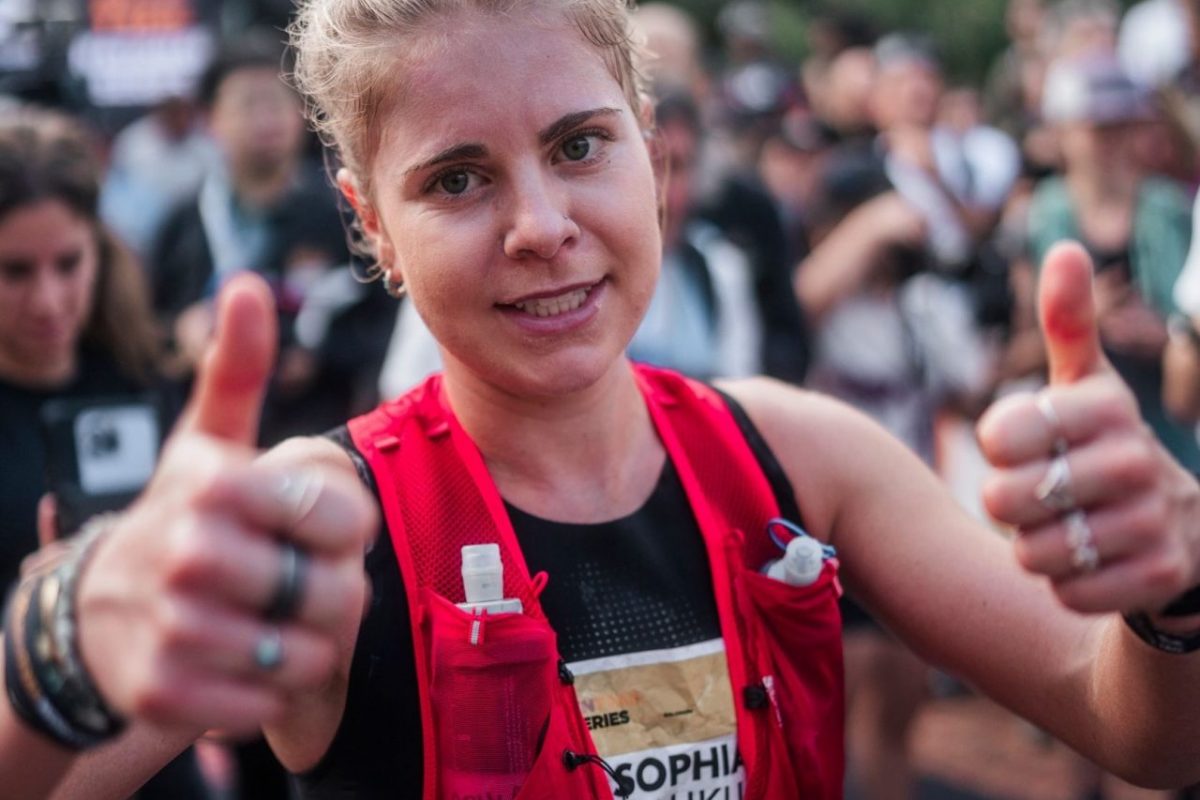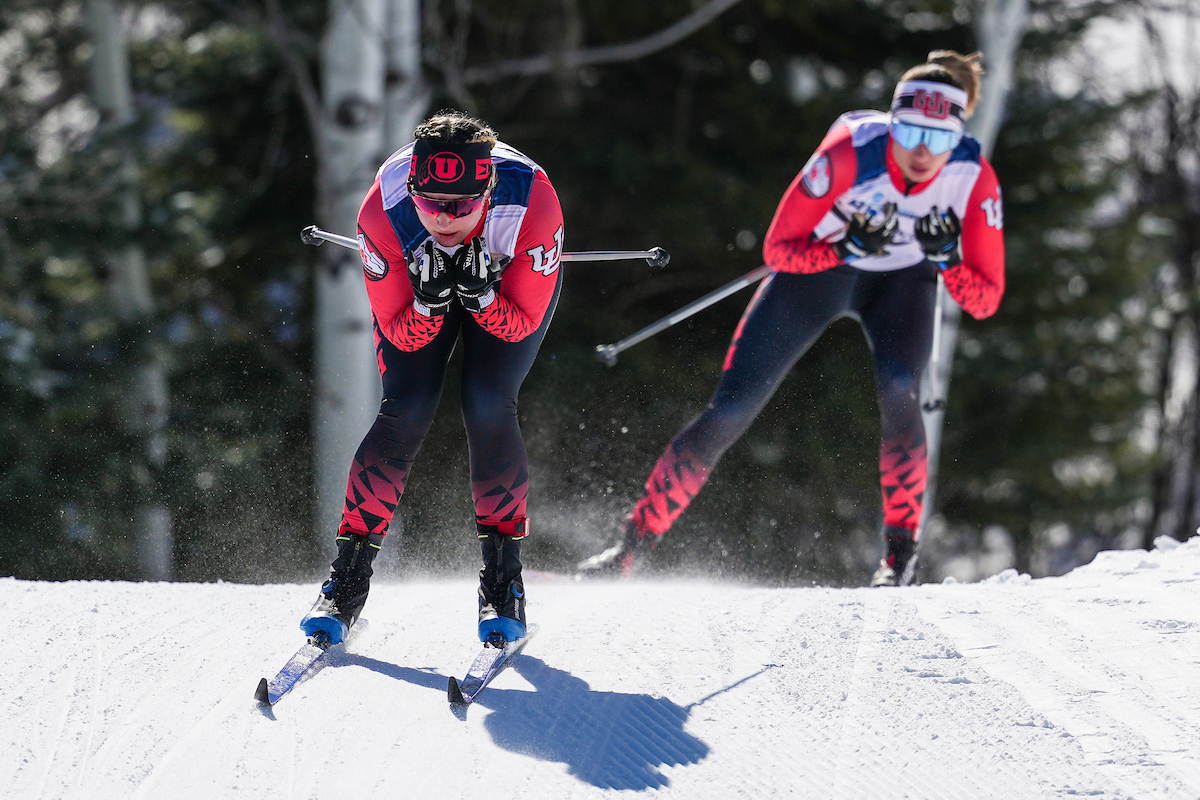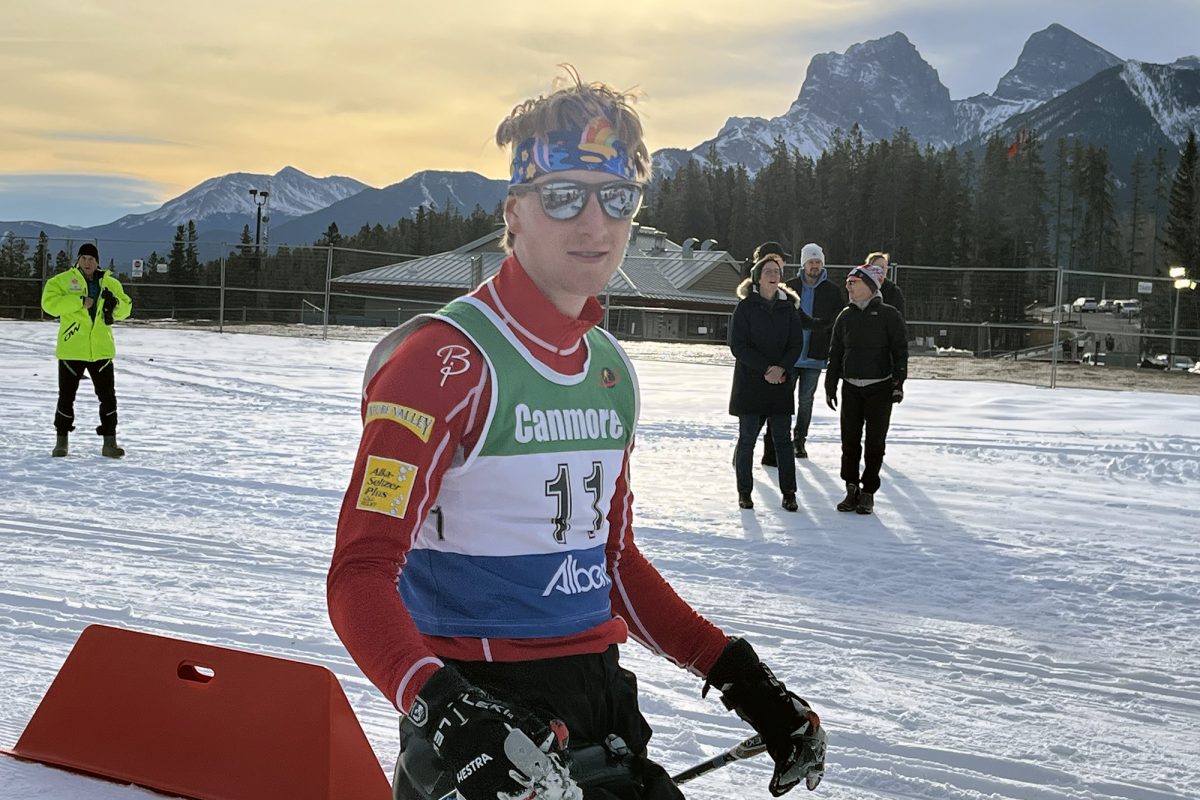Global warming. Climate change. These words are not only armaments in the topical arsenal of politicians, but are also an unfortunate reality for Nordic skiers around the world. Anyone who has seen pictures from the 2007 World Cup in Russia knows how ugly the situation can be. So is time running out for cross country skiing?
Maybe not, if you’re creative and have a liberal tolerance of what can be skied on. A few weeks ago, several Youtube videos popped up on fasterskier.com, within an article aptly titled “The Obsolescence of Snow?†It features skiers in ordinary winter ski equipment cresting hills of some kind of synthetic crimson snow in the heat of summer. No clunky rollerskis and careful negotiation of road traffic, but genuine skiing.
What you see is the latest development of the Italian company Neveplast, founded in 1998 by skiing enthusiasts Aldo, Edoardo and Niccolò Bertocchi. While these videos are a few years old, public awareness is slowly growing in the US.
It’s actually only a third of the Neveplast product line. The company manufactures three types of ski slopes- NP30, an all-purpose alpine, telemark, tubing, and snowboarding surface; NP50, the tracks suitable for cross country; and NP70, which is used around chairlifts and unloading areas.
The last two products are familiar to visitors of several resorts in North America, and in Europe, promotional agencies of Pool Italia and the 2005 Alpine World Championships. But by far, the most celebrated appearance of the skiing tracks was in the opening ceremonies of the 2006 Winter Olympic Games in Torino. In athletic circles, the NP30 is familiar to many prominent Italian skiers, many of whom placed regularly in the last few Olympic Games. Fans of alpine skiing may recognize names like Giorgio Rocca, Alberto Tomba, and Gustavo Theoni, all of whom are acquainted with the training potential of Neveplast.
Until very recently, though, Nordic fans have been out of luck for their own Neveplast solution to skiing in an increasingly hostile climate. Since its inception, Neveplast has been trying to come up with viable solutions for this market. It wasn’t until 2005 that researchers in the company came up with a unique substance that replicates the specific properties of groomed skiing tracks. In an email interview, Neveplast Administrator Olmo Balini describes the company’s innovations.
“The difference between NP30, NP50, and NP70 is the plastic composition,†he writes. Designed for edged alpine skis, “the NP30 has more solid sliding lubricants and very good abrasion resistance.†The NP50, is designed for edgeless cross country skis and therefore “allows the same gliding dynamics, but is less abrasive.†The NP70, intended for unloading areas of chairlifts, utilizes a compound mixture that is far less slick than the other two.
The Nordic skiing mats rely on a unique mixture of hydrocarbons and dry lubricant which emulate the smoothness and traction of wax on corduroy skating lanes, and do not damage skiing equipment beyond ordinary wear and tear. These unnamed “sliding agents†are a highly guarded trade secret. Getting this right proportion of ingredients took years of field research.
It seems to have paid off. According to tests performed by the Department of Civil Engineering at the University of Trieste, the material has a coefficient of friction of 0.06. This compares favorably the average 0.05 of a correctly waxed ski.
Though Neveplast is reticent about its synthetic snow recipe, the company is quick to divulge what’s not in it. Much maligned chlorofluorocarbons (CFCs), halons, carbon tetrachloride, and trichlorethane explicitly do not make the ingredients list.
A company devoted to athletic solutions to climate change certainly would be aware of its own effects on the environment. In fact, it’s one of main reasons why the water-insoluble NP50 took so long to develop. According to Balini, “[w]e are hearing more of Global Warming and we contribute to fighting it by producing installations that do not require irrigation systems so, in consequence, there is no water and electrical energy consumption.â€
Biodegradability also dictated the NP50’s construction. This necessity “has led [Neveplast] to produce products that can be partially regenerated once their cycle of use has ended.†Like real snow, the carpets are fully biodegradable and can be recycled into new generations of skiing surfaces.
The NP50 is not a perfect proxy for winter, however. The main difference between “wet†skiing and using the Neveplast product is that on the latter, snowplowing is not possible on downhill grades exceeding 8-10%. But the real advantage over snow, of course, is that NP50 won’t melt. That is, unless you’re in the habit of skiing on the sunny side of the Moon, where temperatures exceed the 100° Celsius melting point, or about 194° Fahrenheit. For most skiers, that should not be too much of a problem.
“Grooming†the NP50 carpet is also a different task. The tracks come in modular 236 x 110 cm sheets, which take one person an hour to fasten together into a skating lane 7-8 meters in length. Within each panel, double rows of 2 cm-high conical bristles replicate the typical striated appearance of skating lanes, while an underlying elastic layer provides the cushioning support of compacted snow.
Neveplast also manufactures a variant of the NP-50, designed for the classic technique. It features a hard plastic shell molded in the exact dimensions of FIS format classical tracks, whose ski and pole runways are embedded with the NP50 material. A couple of different grades of NP50 are available depending on the terrain, ranging from a softer plastic that prevents skis from slipping backwards, to a harder bristle composition used for downhill trails. But like the freestyle product, the classical trails can be used with ordinary poles and skis.
Several NP50 tracks have sprung up in the last few years, catering to curious enthusiasts interested in perfecting their sport year-round. Currently, Neveplast sponsors several loops in the Italian towns of Brescia, Vigevano, and Cuneo, ranging from several hundred to almost a thousand meters in length.
There’s no word yet on where the FIS stands on future replacements for diminishing snow and unreliable winter seasons, but Balini is confident that “[the NP-50] will have a great demand in the future,†allowing “an increasing interest in the practice of Nordic skiing,†even as the climate becomes ever more unreceptive to winter sports.
</font></center></p>
</div></div><!-- /btArticleContentInnerInner --><section class=)



